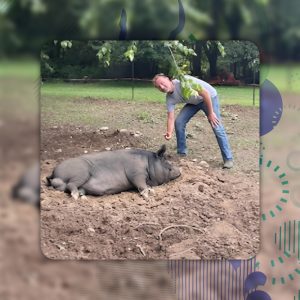The Basics to Gardening


Gardening can improve mental health, connect us to nature, and provide moderate exercise. It also teaches patience and careful observation.
Choose a spot for your garden and prepare it by removing any weeds and rotten or damaged parts of the soil. Make sure it receives at least 6 hours of sun.
Soil
The soil in your garden is more than just dirt — it provides vital nutrients, water and support for plants to grow. Understanding how to cultivate the best soil is essential in your gardening journey.
Pick a location for your garden that receives at least 6 hours of direct sunlight. This helps vegetables, herbs, and flowers thrive. Avoid areas with strong wind, which can knock over young and budding plants and keep pollinators from doing their job.
Before planting, test your soil to know its nutrient level and pH. Amend it with compost, manure and other organic matter to improve its structure. Add a layer of organic mulch such as straw, grass clippings or deciduous leaves to help retain moisture and add nutrients to the soil.
Water
Besides sunlight, water is the other essential ingredient to growing plants, both in-ground and in containers. Watering practices significantly impact the garden’s success and save money on your utility bill.
However, a lawn requires much more water and energy to maintain than a vegetable garden. It also involves mowing, weeding and equipment maintenance.
Using mulch is one of the best ways to conserve water in your garden, as it reduces evaporation and keeps the soil at a cooler temperature for better root absorption. A hose or a watering can is fine for small gardens and pots, but during hot weather, it’s best to use soaker hoses, which give the soil more time to absorb moisture. Over-zealous watering chokes roots and can lead to fungus and diseases.
Pruning
Pruning is a form of maintenance that enhances plants’ appearance and surroundings. It also helps to protect the plant from damage or disease. Pruning includes cutting back shrubs, perennials, and annuals; deadheading, removing spent flowers; and thinning out and shaping trees.
One of the most important things a gardener can do is observe and learn about the plants in the garden. This includes noticing how the plants grow and change throughout the seasons. It’s also helpful to understand what’s “normal” for a particular plant species, for example, that not all evergreen conifers lose their needles in the winter.
Observation also means learning about the insects and birds that visit the garden. This can help you learn how to manage pests without using chemicals that may harm the pollinators.
Fertilizing
The nutrient-rich soil in which garden plants grow is their food source, but the nutrients can be depleted over time. That’s where fertilizer comes in.
Most crops—including most vegetables, fruits, and flowers such as roses and hydrangeas—benefit from being fed with a general-purpose liquid fertilizer about once a month during the growing season. But some garden plants, including perennials and some annuals, may not need fertilizer if you mix lots of organic matter into the soil before planting.
Be careful when using fertilizers, especially nitrogen and phosphorus. Excessive application can result in excessive plant growth and algal blooms that harm watersheds and lakes.
Harvesting
Depending on the type of crops you grow, you may need to harvest them by hand or with tools. For example, saffron is harvested using a thread, while vanilla beans are removed from trees with shears.
When to harvest your plants depends on the time of year and whether or not they need to be protected from frost. Leafy greens are “cut and come again” varieties that can be cut frequently, while vegetables like corn, beans, and tomatoes are best left to ripen fully in the sun.
Gardening is a great way to spend time outdoors, connect with nature, reduce stress, and add some exercise to your daily routine. It’s also a fantastic way to grow fresh, healthy fruits and veggies that support the environment.
